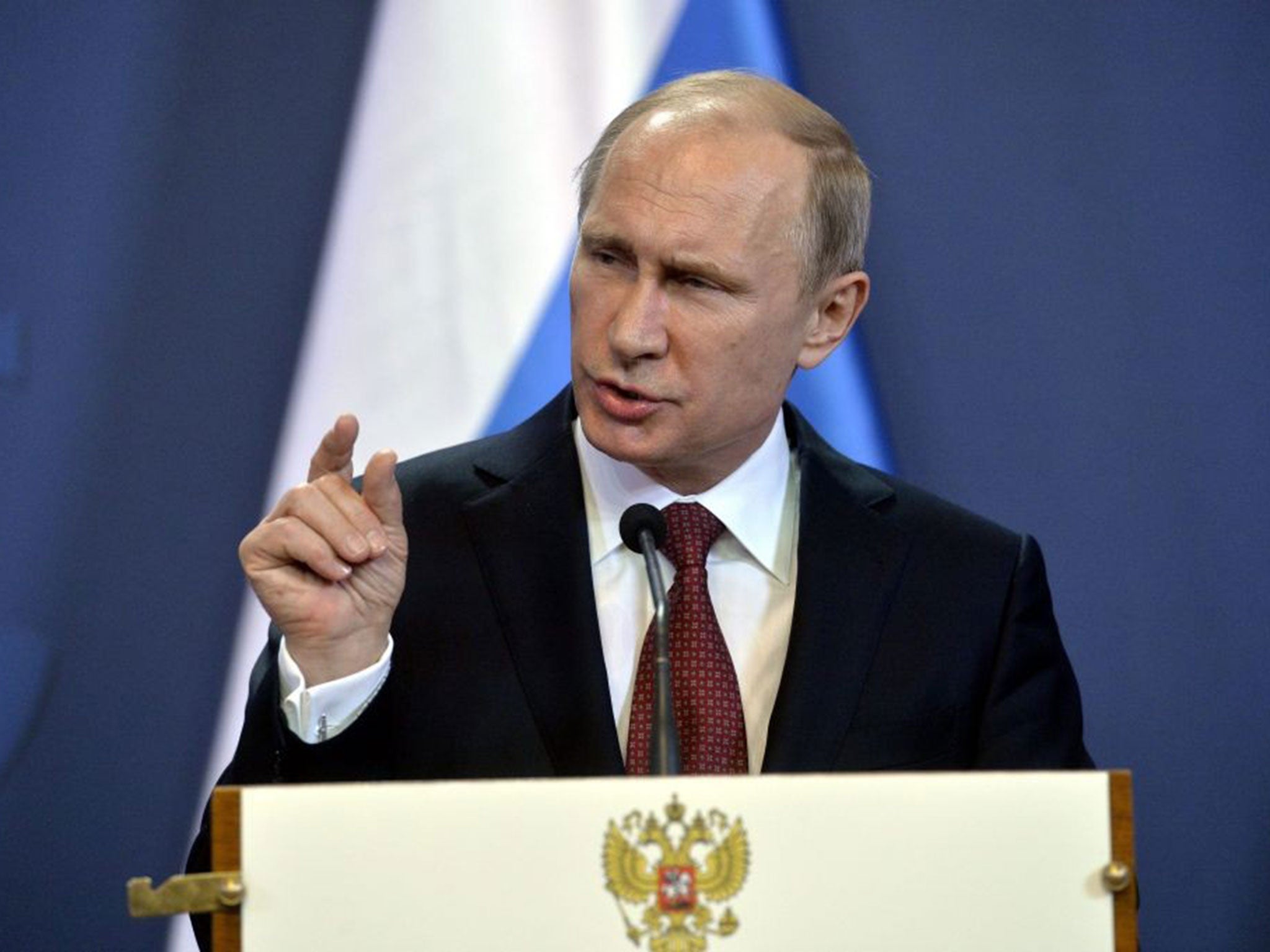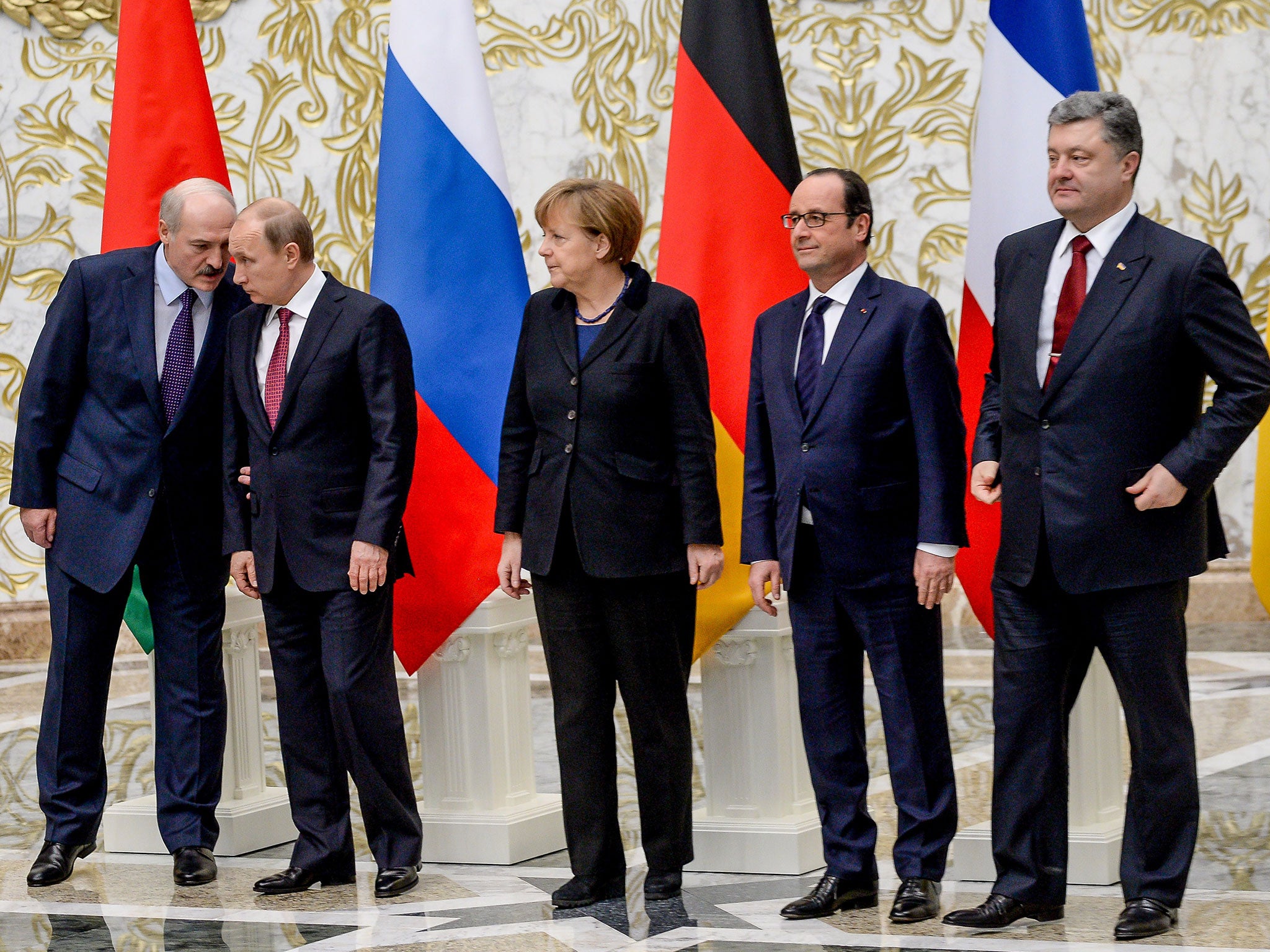Ukraine crisis: Putin is counting on fact West has no desire for war
A flimsy figleaf is enough for those with no stomach for a fight


Russia, once wrote George Kennan, author of the doctrine of “containment” of the Soviet Union at the start of the Cold War, “can have at its borders only vassals or enemies”. The Soviet Union is long gone, but with its behaviour in Ukraine today, Georgia yesterday, and perhaps the Baltic states tomorrow, post-Soviet Russia is posing the self-same question. How can Vladimir Putin, who seems bent on a new Cold War, be contained?
The short answer, provided by geography, history and a cold evaluation of diplomatic and political realities, is that he cannot, unless the US and its Nato allies convince Moscow that it is ready for war with Russia, with all that this implies. Otherwise they have two lesser options of countering Putin’s undeclared campaign to take control of eastern Ukraine by hybrid war, asymmetric war, creeping invasion – call it what you will. One is economic, the other military. Neither looks very promising, again unless the West is prepared to go all the way.
The economic option, already being tried, is sanctions. Rarely though do sanctions work, least of all against places like Russia, a supremely resilient country that has faced far worse in the past. There is of course the “nuclear option” of cutting Russia out of the Swift interbank messaging network, that would largely sever it from the international financial system. To which Russian officials respond in kind, talking of real nuclear conflict. Hyperbole – but also a calculated reminder of how high the stakes ultimately might be.
Then there’s military assistance, in the hope that higher casualties and escalating economic costs make war unsustainable. But if the West does send more powerful weapons, Ukrainian forces would need weeks of training to use them. Meanwhile Russia would merely deploy even more powerful arms of its own. The victims would be the poor Ukrainians. Or we could play them at their own game, using air strikes or despatching commandos to take on the “little green men” and pro-Russian militants. But just imagine if a Nato aircraft was shot down, or a Nato commando unit captured.
On the face of it, one exception exists to disprove these gloomy musings – the 1989 Soviet retreat from Afghanistan that ended a disastrous 10-year war which had sapped the national coffers and morale, and contributed to the demise of the Soviet Union itself. Could not a similar scenario unfold for Ukraine, a combination of Russian military casualties and Western sanctions that oblige Putin to withdraw his support and ultimately lead to his downfall?
The circumstances however are entirely different. Yes, Afghanistan bordered on the Soviet Union – but on three of its central Asian republics, not on Russia proper. Yes, Western weapons (most notably Stinger anti-helicopter missiles), overtly shipped to the mujahedin, hastened the outcome.
But in the case of Afghanistan, Moscow was on the wrong end of asymmetric warfare, its army of occupation facing guerilla forces rooted in the local population. There was no ethnic Russian minority based already in the country, to serve as pretext, bridgehead or shelter for the invader.
Complicating matters further, Moscow does not want to take over Ukraine in its entirety, as part of a reconstituted Russian empire. All it has to do is use eastern Ukraine and Trans-Dniester, the sliver of land between Moldova and Ukraine that also has a substantial Russian minority, as destabilising elements. Almost exactly the same thing happened in Georgia in 2008.

Neither Georgia nor Ukraine of course are Nato members; the West has no legal obligation to defend them. The same is not true of the Baltic states, two of which (Estonia and Latvia) directly border Russia and have large ethnic Russian populations. They are far less able to defend themselves than Ukraine. For centuries, they belonged first to the Russian empire, then the Soviet Union.
Today, however, as EU and Nato members, they are rooted in the West. If they came under military attack from Moscow, they would be protected by the Nato treaty’s Article 5, that deems an attack on one member an attack on all. First, though the attack would have to be shown to be such.
Putin’s tactics in Ukraine have allowed him a figleaf of deniability. But even the flimsiest, most mendacious figleaf is enough to persuade adversaries who have no real stomach for a fight. That is his calculation, as he seeks to rebuild Russia’s sphere of influence, and unpick the post-Cold war order.
He surveys a hesitant US and an EU that seems only to want a quiet life. Putin has shown he will raise the stakes as required. The question is: can the West contain him by convincing him it will too?

Join our commenting forum
Join thought-provoking conversations, follow other Independent readers and see their replies